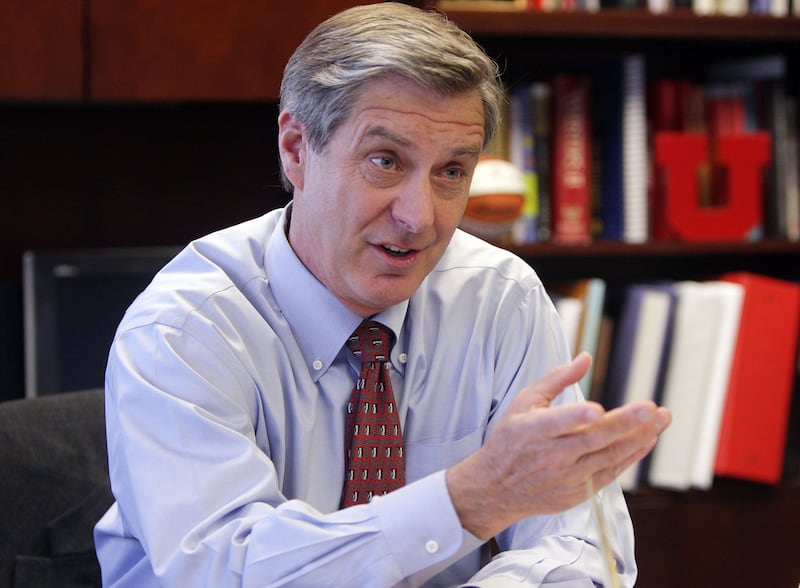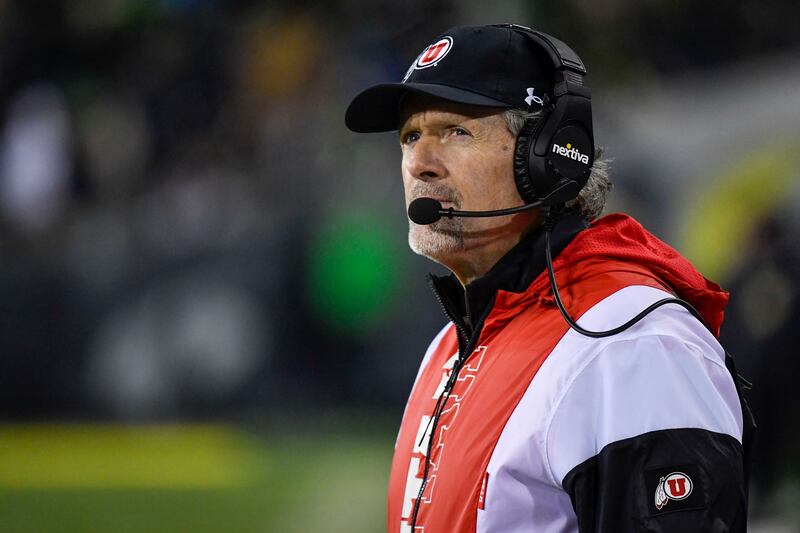The University of Utah has become a major player in college football, one of the big boys. They’re playing in Rose Bowls. They’re winning Pac-12 championships. They’re appearing regularly in the top 20, if not the top 10 in the polls. They’re rubbing shoulder pads with Penn State, Ohio State, Alabama, USC, Oregon ...
On Jan. 2 they’ll play in their second consecutive Rose Bowl. Who could’ve imagined such a thing at the turn of the century or even a dozen years ago?
It’s easy to forget just how far the Utes have come in a relatively short time. Penn State and Ohio State are old money; Utah is new money. The Utes have clawed and scratched their way up the ladder and broken into the good old boys club of the elite programs.
For decades they were a perfectly mediocre football program. During the 1950s the Utes compiled a record of 54-44-4; during the ’60s they were 53-48-1; during the ’70s they were 44-67; during the ’80s they were 54-57-3. They started the 1990s with a 4-7 record. That gave them a 41-year record of 209-223-8, an average of five wins per season. In only nine of those 41 seasons did Utah manage to win more than six games.
The Utes went through coaches like office temps. Three coaches in the ’60s, three coaches in the ’70s, three coaches in the ’80s. During LaVell Edwards’ 29 years as BYU’s coach, the Utes went through six coaches. Bill Meek was 33-31, Tom Lovat 5-28, Wayne Howard 30-24-2, Chuck Stobart 16-17-1, Jim Fassel 25-33 and then Ron McBride. Fassel went on to take the New York Giants to a Super Bowl as the head coach, but he couldn’t make winners out of the Utes.
“This place is jinxed!” Howard once said. “It’s impossible to win here. I don’t know what it is.” And he’s one of the two coaches who got out of town with a winning record.
Nobody could understand it. The school was located in the foothills, surrounded by mountains, with a major city at its feet. It wasn’t as if coaches were trying to recruit players to desolate places such as El Paso (UTEP) and Laramie (Wyoming), which had the added problem of extreme climates. It wasn’t like recruiting to Hawaii, which is paradisiacal but also in the middle of the Pacific Ocean and rarely granted national media coverage. Utah also didn’t have the challenging admissions restrictions of BYU and Air Force. Even schools in those places managed to win once in a while, excepting UTEP.
I wrote in 1990 about Utah’s strange mediocrity. I discussed it with the school’s relatively new athletic director at the time, Chris Hill. He was as baffled as anyone.
“The bottom line is that (the Utes) are an enigma,” he said.
The Utes had the WAC’s second largest hometown, the third highest enrollment, the fourth highest attendance, yet had finished in the bottom half of the league standings eight times in the previous 10 years.

I wrote at the time, “No one is saying the Utes should be perennial conference champs. But they should be able to finish among the top three or four teams in the WAC annually, win seven or so games, and challenge for the title every three or four years.”
The Utes tied for the WAC title in 1964. They had to wait 31 years to win another one (also a tie). They had appeared in two bowl games in 45 years when McBride took over the job in 1990. McBride started the team’s renaissance. During McBride’s 13 years on the job, the Utes compiled a record of 88-63 and earned six bowl berths, winning three of them.
McBride gave way to Urban Meyer, a largely unknown coach at Bowling Green who proceeded to coach Utah for two spectacular years, winning 22 of 24 games. He completed his second season with a 12-0 record and a No. 4 national ranking, capped by a lopsided win over Pitt in the Fiesta Bowl.
Meyer moved on to Florida and his defensive coordinator, Kyle Whittingham, replaced him. During Whittingham’s 18 years as head coach, the Utes have compiled a record of 154-73, making him the winningest coach in school history. He has taken the Utes to 15 bowl games and won 11 of them. Under Whittingham, the Utes finished No. 2 in the national polls in 2008, beating Alabama in the Sugar Bowl.
They were still outsiders at the time, part of the unwashed who were part of the Group of Five conferences and treated as second-class citizens by college football. But all that winning and national attention earned an invitation to join the Pac-12 in 2011. After struggling through a three-year transition to the new conference, the Utes gained traction. In the last nine seasons they have finished in the top 20 six times (counting this season).
The bottom line is that in the 30 years the once-enigmatic Utes have claimed seven conference championships, 23 bowl berths, 15 bowl wins, a dozen top-25 finishes and appeared in three of the most prestigious bowls in the game — Rose (twice), Sugar and Fiesta. That’s a remarkable turnaround for a program that from 1958 to 1995 — 37 years — earned one conference title, one bowl berth and one top-20 finish.
“If we can’t get it going in the next three or four years, then we’ve really got problems,” Hill said in 1990. “I can’t see what else we need. Everything is in place.”
He proved to be right.
Rose Bowl on the air
No. 8 Utah (10-3) vs. No. 11 Penn State (10-2)
Jan. 2, 3 p.m. MST
Rose Bowl
Pasadena, California
TV: ESPN
Radio: ESPN 700


